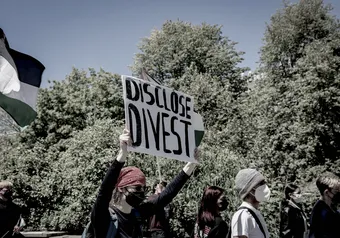Learning lies at the heart of everything that happens at UBC. It’s right there in the university’s vision and values statement alongside a commitment to equity and inclusion for all students. And with one of the world’s best faculties of education, UBC is also training the next generation of leading educators. But do UBC teachers and teachers-in-training understand how lesbian, gay, bisexual and queer students are watching them to judge how safe a classroom might be?
Before my doctoral studies at UBC, I conducted research on the experiences of LGBQ* students learning Japanese as a second language and found that queer students actually spend a great deal of their time and emotional energy assessing the situation around them. And teachers? I’m not trying to freak you out if you’re a teacher, but one of the things that LGBQ students are observing is you.
Teachers should know that — intentionally or not — they are constantly giving off cues about where they stand on LGBQ issues. What’s more, the opinions their students associate with those cues might not even be an accurate reflection of the teacher’s true beliefs.
The data from my interviews with 16 queer language learners shows that LGBQ students pay attention to particular characteristics and behaviours of their teachers at different times. For example, when LGBQ students first join their classes, they only have access to a very limited set of information about the people around them. Erring on the side of caution, they consider things like the teacher’s age (the younger, the better), gender (female teachers were generally assumed to be more LGBQ-friendly than males) and nationality (spoiler: if your home country attracts a lot of press for being anti-gay, that’s how you'll probably be read, too).
I know plenty of older male teachers who are very LGBQ-friendly, but unfortunately this is not necessarily how they will be read at first by their students.
That’s not to say that LGBQ students use these cues happily either. My participants were well aware that during these early stages of a course they were being forced to rely on crude stereotyping in the name of staying safe. “I know I shouldn’t make those assumptions, but …,” tailed off one participant.
As the term progresses, however, LGBQ students gain more opportunities to observe how their teachers react on the rare occasions when the messiness of ordinary life, so often censored in textbooks and silenced by institutions, spills into the classroom.
For example, Ernest, an American gay man studying at a private Japanese language school in southern Japan, told me about an episode that happened just a few weeks before we first spoke. Some of his (straight, male) classmates made a transphobic comment during a class discussion and Ernest, while not being out in class at that point, vocally challenged them. He praised his teacher for then stepping in calmly and helping to defuse the situation: “I thought, ‘Oh, okay. She knows what’s up.’”
To be sure, queer students are not just watching the teacher. Ernest’s example shows us that they are also watching their classmates. Marie, a bisexual woman from the US, and Tereza, a pansexual gender-queer student from Romania, also emphasized the crucial role that wider institutional and social attitudes towards LGBQ people played as they ultimately decided to reveal or conceal their identities in the classroom.
So, although who teachers are (or at least appear to be) and what they do in the classroom are only two pieces of a much larger puzzle, it is still very much within their power to contribute to their students’ feelings of safety.
As I pulled my conclusions together, I reflected on my own practice as an English language teacher and realised how little I was doing to proactively create an inclusive learning environment for my students. How could I take the guesswork out of the equation for marginalized or silenced students, busy trying to figure out how to manage their identities in the classroom we shared?
I realized that teachers can show their students how inclusive they are in two ways. Like Ernest’s teacher, teachers can show their inclusive teaching practice in how they react to events, showing their students that they are not afraid of real life and can facilitate respectful and calm discussion. But they can work proactively to explicitly let their students know at the beginning of any course that they want to make their classrooms safe for them.
The safe space stickers you may have seen around the university are a start, but why limit being inclusive to sexuality and gender? Why not be ambitious and include a number of less-visible identities that might shape a student’s classroom experience, including religious affiliation and disabilities?
There are various ways this could be done — such as with a short speech at the beginning of class or a statement in a syllabus or online class survey — but one thing is clear: UBC’s admirable commitment to inclusion at an institutional level is just the start.
My findings show that each classroom functions as a relatively autonomous social world, with its own real and imagined norms that might be problematic for various groups of students. And if teachers don’t explicitly show their watching students that they are part of the solution, they could be implicitly assumed to be part of the problem.
*Unfortunately, I was unable to recruit any transgender participants.
Ashley R. Moore is a PhD student in the department of Language and Literacy Education at UBC.
Share this article
First online





